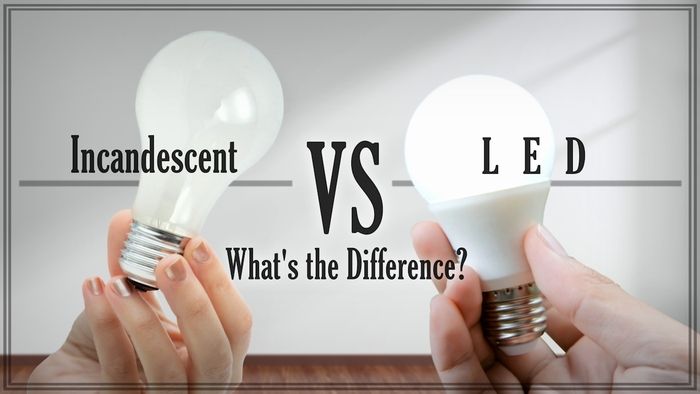Lighting is more than just brightness—it shapes mood, productivity, energy consumption, and even how we perceive our environment. Over the past few decades, the shift from traditional incandescent bulbs to LED technology has revolutionized the way we illuminate homes, offices, and outdoor spaces. To make informed lighting decisions, it is essential to understand two key aspects: the concept of correlated color temperature (CCT) and the ongoing comparison of LED vs incandescent lighting. Together, these factors determine not only how light looks but also its efficiency, sustainability, and long-term value.
Understanding Correlated Color Temperature (CCT)
Correlated color temperature, commonly referred to as CCT, measures the color appearance of light emitted by a bulb, expressed in Kelvin (K). It describes whether the light appears warm (yellowish), neutral, or cool (bluish-white).
Why CCT Matters:
The lighting temperature you choose influences both function and ambiance. A warm 2700K bulb feels cozy, while a crisp 5000K light promotes alertness. Selecting the right LED CCT ensures your space achieves the desired atmosphere without compromising comfort.
Common CCT Ranges:
- 2700K – 3000K (Warm White): Creates a soft, intimate environment. Perfect for living rooms, restaurants, and hospitality spaces.
- 3500K – 4100K (Neutral White): Balanced brightness for offices, classrooms, and retail stores.
- 5000K – 6500K (Cool/Daylight White): Mimics daylight, enhancing focus and visibility. Suitable for warehouses, workshops, and outdoor lighting.
Benefits of Adjustable LED CCT:
- Flexibility to change ambiance according to activity.
- Reduces the need for multiple fixture types.
- Smart controls allow automated CCT adjustments during the day to mimic natural circadian rhythms.
By understanding LED CCT, businesses and homeowners can optimize lighting for both aesthetics and functionality.
LED vs Incandescent: The Lighting Technology Shift
The debate of LED vs incandescent lighting highlights the dramatic progress in illumination technology. While incandescent bulbs once dominated the market, LEDs have become the gold standard due to their efficiency, durability, and versatility.
Key Differences Between LED and Incandescent:
- Energy Efficiency
- Incandescent: Consumes up to 90% of energy as heat.
- LED: Uses significantly less power, saving up to 80% on electricity bills.
- Lifespan
- Incandescent: Typically lasts 1,000 hours.
- LED: Offers 25,000–50,000 hours, reducing replacement frequency.
- Brightness & Color Options
- Incandescent: Produces warm, soft light but limited in CCT options.
- LED: Available in full CCT spectrum, from warm white to daylight.
- Environmental Impact
- Incandescent: High carbon footprint and waste due to frequent replacements.
- LED: Eco-friendly, recyclable, and energy-efficient.
- Cost
- Incandescent: Low upfront cost but expensive long-term due to energy usage and replacements.
- LED: Higher upfront price but pays for itself with energy and maintenance savings.
The Role of CCT in the LED vs Incandescent Comparison
One of the reasons incandescent bulbs were long preferred is their naturally warm glow, around 2700K. Many people associate this warmth with comfort and relaxation. However, LEDs have overcome this barrier with advanced LED CCT technology, enabling them to replicate incandescent warmth while also offering cooler tones that incandescents cannot.
How LED CCT Provides an Edge:
- Offers both traditional warmth and modern cool tones.
- Enhances productivity in work environments with higher CCT options.
- Reduces eye strain by allowing users to adjust lighting according to time of day.
- Adds versatility in applications ranging from hospitality to industrial spaces.
Thus, LED vs incandescent is not just about energy efficiency; it’s also about flexibility in lighting design, where LEDs excel with customizable CCT options.
Practical Applications of LED CCT and LED Advantages
LED lighting with adjustable CCT is now widely used across industries and homes because it adapts to different needs.
Applications in Different Spaces:
- Residential Lighting
- Warm white LEDs (2700K) create a homely atmosphere in bedrooms and living rooms.
- Cool daylight LEDs (5000K) are perfect for kitchens, garages, or study rooms.
- Office and Commercial Spaces
- Neutral white (3500K–4100K) improves focus and productivity.
- Adjustable LED CCT systems allow offices to shift tones throughout the day to support employee well-being.
- Warehouses and Industrial Settings
- High CCT (5000K–6500K) ensures visibility, safety, and accuracy in detailed work.
- Long lifespan reduces downtime caused by frequent maintenance.
- Outdoor Lighting
- Cool white or daylight LEDs provide enhanced security in parking lots, pathways, and building exteriors.
- Tunable LED CCT ensures different lighting tones for decorative and functional outdoor lighting.
Bullet Point Summary of LED Benefits Over Incandescent
- Up to 80% energy savings compared to incandescent bulbs.
- 25x longer lifespan, cutting down on replacements.
- Full range of correlated color temperature options (2700K–6500K).
- Smart controllability with dimming and CCT adjustments.
- Eco-friendly and recyclable with minimal carbon footprint.
- Reduced heat emission, safer for enclosed fixtures.
Choosing the Right LED CCT for Your Space
Selecting the right correlated color temperature depends on both functional and aesthetic needs. Here’s a quick guide:
- Warm White (2700K–3000K) → Best for relaxation spaces like bedrooms and restaurants.
- Neutral White (3500K–4100K) → Ideal for productive environments such as offices and classrooms.
- Cool White/Daylight (5000K–6500K) → Perfect for industrial spaces, hospitals, or outdoor security lighting.
By considering LED CCT, you ensure that the light matches the activity and atmosphere, something incandescent bulbs cannot offer with their limited warm glow.
Future of Lighting: Why LED Is Here to Stay
The LED vs incandescent debate is nearing its end because LEDs consistently prove superior. Governments worldwide are phasing out incandescent bulbs due to inefficiency, pushing consumers and businesses toward sustainable solutions. Meanwhile, advancements in LED CCT technology continue to make LEDs more versatile, human-centric, and compatible with smart systems.
Looking forward, we can expect:
- Greater integration of smart lighting systems with tunable CCT.
- Increased adoption of LEDs in both residential and commercial sectors.
- Continuous improvements in efficiency, lifespan, and affordability.
Conclusion
Understanding correlated color temperature (CCT) and the differences in LED vs incandescent lighting is key to making smart, sustainable, and cost-effective lighting choices. While incandescent bulbs may still evoke nostalgia with their warm glow, LEDs provide everything incandescents do—and far more. With tunable LED CCT, incredible efficiency, and long-term savings, LEDs are the clear choice for modern living and working environments. By adopting LEDs, you’re not only upgrading your lighting but also investing in comfort, productivity, and environmental responsibility.



